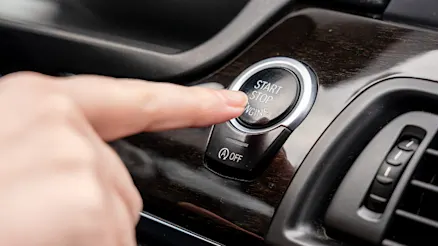
Why does my car behave differently when I start it in the morning?
Ever notice your car feels different in the morning? Learn why cold starts affect performance and how to keep your car running smoothly year-round.


Is the New Vehicle Efficiency Standard (NVES) a smart move, or a misstep? Critics have called it an 'unfair tax' that will limit our choice of vehicles. On the other hand, the new standard is set to save us fuel costs and bring us up to speed with other developed countries.
So let’s explore what the NVES actually is, and what it might mean for your car purchases down the track!
Car makers like Ford, Mazda, and Hyundai will be strongly encouraged to offer more fuel-efficient, low-emission or zero-emission vehicles for sale, particularly to balance out any less efficient vehicles they sell.
The NVES sets an average CO2 emissions target for each car maker, which applies to all the new vehicles the car maker sells each year. Each car maker is expected to meet or beat their average target across the vehicles they sell, otherwise hefty penalties apply. Car makers that don’t meet their average target can choose to purchase credits from other car makers who have overperformed on their own target.
Each year the vehicle emissions targets will be lowered, which will further incentivise fuel-efficient designs and options over time. The NVES came into effect in January 2025, but penalties start to apply from 1 July 2025.
At its simplest, to make sure we have access to more efficient vehicles in Australia and can lower Australia’s CO2 emission output. More efficient vehicles will also help drivers save on fuel.
Based on government modelling, the NVES is expected to:
The transport sector contributes around 21% of Australia’s emission output, and Aussie passenger vehicles emit 50% more CO2 than the average of the world’s major markets. So there’s definitely room to improve in this area.
The main concerns are whether the NVES will drive car prices up as car makers pass on potential costs, and whether it will affect choice. Some car brands have stated they’ll either be passing on costs to consumers, or pulling certain models from sale to minimise penalties under the standard. Automakers that focus on 4x4 utes and SUVs could be particularly impacted if they don’t offer more efficient vehicles as well. New data from Blue Flag has forecast $2.7 billion in penalties by 2028, when the penalties actually become payable.
There’s also been some concern that the NVES will punish those who buy large or commercial vehicles, as well as those who can’t afford the outright costs for an EV – more on this later.
Here’s the thing to remember: the car industry itself largely supports the introduction of a fuel-efficiency standard in Australia. The NVES also brings Australian standards into line with OECD countries, as we’ve been lagging behind for some years now.
Not unusual at all. While we’ve had voluntary standards since 1978, Australia has actually been one of the only developed nations to not have a mandatory fuel emissions standard in place. In fact, it’s been just us and Russia as the exceptions. Over 85% of cars sold worldwide are already covered by a fuel efficiency standard, including in The European Union, Canada, the US, and Japan.
Here’s another interesting note: In some places that have had a standard in place for a long time, such as the US and Canada, there’s been no real-world evidence these standards led to an increase in vehicle prices.
When we look at this issue globally, there’s been little incentive for manufacturers to send their most efficient technology to Australia rather than countries with standards in place. This has actually led to less choice of efficient, hybrid and EV options. So to some extent, we’ve been offloaded with less efficient cars in the past because we didn’t have targets. Why be a dumping ground for old tech when we could be paying less at the bowser instead?
The emissions targets are designed to average out across the whole car maker’s range, leaving some wiggle room when it comes to choosing which vehicles to sell. So automakers could choose to sell a heavy 4x4, plus a very efficient small car, and still meet their target. As proof, there’s still plenty of choice in 4x4s, utes and SUVs in overseas markets where there are strict emissions standards in place. So while the NVES encourages more efficient design over time, it still leaves space and options for all types of drivers.
If overseas standards are anything to go by, we can look forward to cars that are cheaper to run as the major car brands adapt. We could see more variety from brands that have been focusing on one vehicle type, and better tech landing on our shores. And as the standard rolls out in coming years, that also means more efficient options as you browse second-hand vehicles for sale. Even now, you can filter your used car search on Carma by CO2 emissions to find yourself a car that’s efficient and affordable to run.
So time will tell. The standard and test protocols might need fine-tuning over time, and we’ll see how the car makers find their balance in this new landscape. But ultimately, it’s quite probably long overdue – and a big step towards cleaner, cheaper driving in Australia.

Ever notice your car feels different in the morning? Learn why cold starts affect performance and how to keep your car running smoothly year-round.

Regularly checking your tyre pressure is crucial to your vehicle’s safety, fuel economy and optimal driving.

Looking for the perfect gift for the car enthusiast in your life? Carma’s experts have you covered.